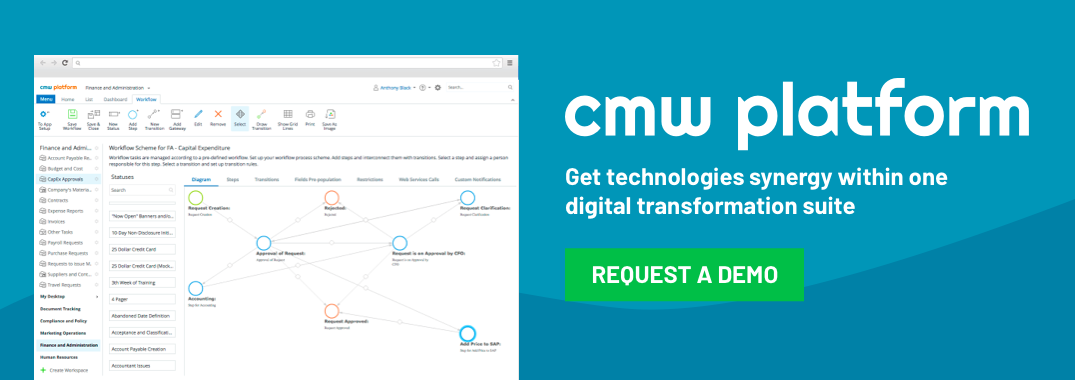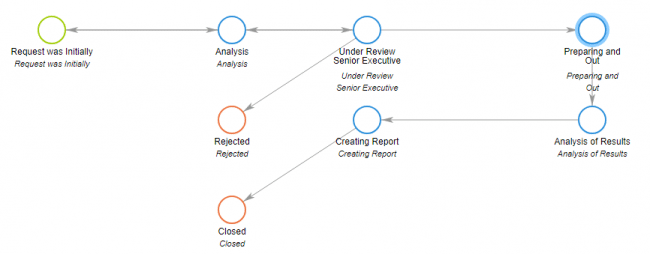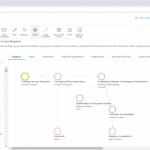5 Ways Workflow Analysis Helps Your Business
February 15, 2023
Technology, markets, and customers change, and workflow monitoring is necessary so that business processes continually meet the needs of a competitive marketplace. The first step in accomplishing this is workflow analysis, so you can accurately evaluate current workflows. Workflow analysis basically includes continuous workflow monitoring, analysis of individual steps in workflow automation processes, and how those steps are connected to each other. Sometimes a single change in one part of a process can accelerate (or slow down) subsequent parts of a process. Workflow analysis benefits businesses in numerous ways. Read on for 5 of the most important of those ways.
 Workflow analysis benefits businesses in numerous ways. Here are 5 of the most important of those ways.
Workflow analysis benefits businesses in numerous ways. Here are 5 of the most important of those ways.
1. By Increasing Overall Efficiency
People tasked with improving a workflow analyse each aspect of a work process and look at the entire process mapped end to end. What steps can be automated, or changed from paper-based to network-based? Workflow analysis tools assist with taking a fresh look at the many individual steps that make up a workflow so that inefficiencies can be identified and technology upgraded as indicated. The result is an organization that runs more smoothly, wastes less time and money, and is poised for better revenues.

Whether you make steel beams for bridges or wedding videos, efficient workflows are essential.
2. By Optimizing Utilization of Physical Space
It’s possible today to use workflow analysis tools to help facilities managers make the absolute most of an organization’s physical space. Are printers located too far from the people who use them most? Could rack servers be replaced by micro-servers to keep the size of your data center under control? Workflow monitoring tools make it easier on facilities managers when it comes to assigning office space, locating major office equipment, and making decisions about how to implement changes when necessary.
3. By Making Customers Happier
Workflow analysis ultimately results in happier customers, if it’s implemented properly. For example, a workflow analysis could be used to better understand the operations of your contact center. Then, when choices need to be made about hiring or technology, they’re made on a foundation of strong workflows and designed to improve workflows even more. When your customer base feels understood and knows that assistance is just a phone call, email, or live chat away, they’re more likely to remain loyal to your business.
4. By Making Regulation Compliance Easier

If you’re ever audited, you’ll be glad you invested in workflow monitoring to ensure all necessary workflow analysis steps are taken to ensure compliance.
Workflow analysis tools can be put to work ensuring that all steps that are necessary for compliance with applicable regulations are completed, logged, and reported as necessary. The healthcare industry and the various financial services industries are bound by numerous regulations and reporting requirements. By building accountability and the logging of steps into affected workflows, audit trails can be created on demand, you always have information to reassure you of compliance, and creating annual reports is far easier.
5. By Boosting Employee Morale
Nobody likes feeling like they’re locked into antiquated, inefficient work processes. Some people may actually propose technology or work process changes, and then feel as if nobody listens. But workflow monitoring reassures both front-line workers and management that inefficiencies can be identified, causes for them determined, and changes made to remedy them. When an employee knows that his or her area of responsibility is being carried out efficiently, with minimum risk of error, workplace morale increases.
What is the First Step in Workflow Analysis?
You are likely to ensure convenient monitoring of the automated workflows. Take into account that workflow analysis approach is unique for every business and usually change in course of time, so there is no workflow analysis example or best practice that would fit all. So, spare neither efforts nor time and ensure that workflow software you choose is flexible enough and can be easily adjusted to your new approaches and business needs. Get ready to your long and fruitful workflow analysis and improvement journey and ensure success. We designed a super flexible workflow software for those who need reliable and easy tools on their way.
Why workflow software by Comindware?
Rare is the workflow that can remain static in the face of changes in technology, market forces, and the customer base, but workflow monitoring reassures organizations that they’re keeping up and staying competitive. Understanding, fine-tuning, and monitoring workflows helps prevent organizations from falling into inefficient processes, which is especially important in industries where regulation is heavy and constantly subject to change. Comindware Tracker is designed so that non-IT personnel can map, assess, improve, and monitor workflows, whether in a single department or across the entire organization, and can make all the difference when it comes to remaining competitive.

 Workflow analysis benefits businesses in numerous ways. Here are 5 of the most important of those ways.
Workflow analysis benefits businesses in numerous ways. Here are 5 of the most important of those ways.1. By Increasing Overall Efficiency
People tasked with improving a workflow analyse each aspect of a work process and look at the entire process mapped end to end. What steps can be automated, or changed from paper-based to network-based? Workflow analysis tools assist with taking a fresh look at the many individual steps that make up a workflow so that inefficiencies can be identified and technology upgraded as indicated. The result is an organization that runs more smoothly, wastes less time and money, and is poised for better revenues.

Whether you make steel beams for bridges or wedding videos, efficient workflows are essential.
2. By Optimizing Utilization of Physical Space
It’s possible today to use workflow analysis tools to help facilities managers make the absolute most of an organization’s physical space. Are printers located too far from the people who use them most? Could rack servers be replaced by micro-servers to keep the size of your data center under control? Workflow monitoring tools make it easier on facilities managers when it comes to assigning office space, locating major office equipment, and making decisions about how to implement changes when necessary.
3. By Making Customers Happier
Workflow analysis ultimately results in happier customers, if it’s implemented properly. For example, a workflow analysis could be used to better understand the operations of your contact center. Then, when choices need to be made about hiring or technology, they’re made on a foundation of strong workflows and designed to improve workflows even more. When your customer base feels understood and knows that assistance is just a phone call, email, or live chat away, they’re more likely to remain loyal to your business.
4. By Making Regulation Compliance Easier

If you’re ever audited, you’ll be glad you invested in workflow monitoring to ensure all necessary workflow analysis steps are taken to ensure compliance.
Workflow analysis tools can be put to work ensuring that all steps that are necessary for compliance with applicable regulations are completed, logged, and reported as necessary. The healthcare industry and the various financial services industries are bound by numerous regulations and reporting requirements. By building accountability and the logging of steps into affected workflows, audit trails can be created on demand, you always have information to reassure you of compliance, and creating annual reports is far easier.
5. By Boosting Employee Morale
Nobody likes feeling like they’re locked into antiquated, inefficient work processes. Some people may actually propose technology or work process changes, and then feel as if nobody listens. But workflow monitoring reassures both front-line workers and management that inefficiencies can be identified, causes for them determined, and changes made to remedy them. When an employee knows that his or her area of responsibility is being carried out efficiently, with minimum risk of error, workplace morale increases.
What is the First Step in Workflow Analysis?
You are likely to ensure convenient monitoring of the automated workflows. Take into account that workflow analysis approach is unique for every business and usually change in course of time, so there is no workflow analysis example or best practice that would fit all. So, spare neither efforts nor time and ensure that workflow software you choose is flexible enough and can be easily adjusted to your new approaches and business needs. Get ready to your long and fruitful workflow analysis and improvement journey and ensure success. We designed a super flexible workflow software for those who need reliable and easy tools on their way.
Why workflow software by Comindware?
Rare is the workflow that can remain static in the face of changes in technology, market forces, and the customer base, but workflow monitoring reassures organizations that they’re keeping up and staying competitive. Understanding, fine-tuning, and monitoring workflows helps prevent organizations from falling into inefficient processes, which is especially important in industries where regulation is heavy and constantly subject to change. Comindware Tracker is designed so that non-IT personnel can map, assess, improve, and monitor workflows, whether in a single department or across the entire organization, and can make all the difference when it comes to remaining competitive.




